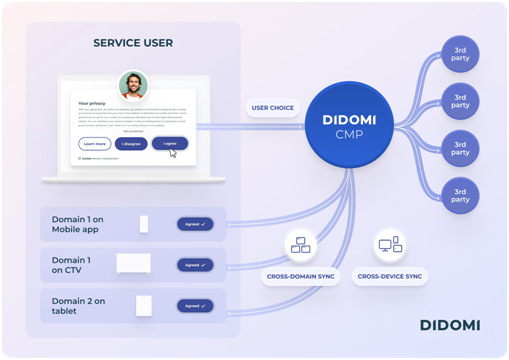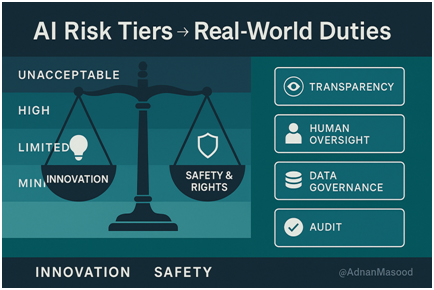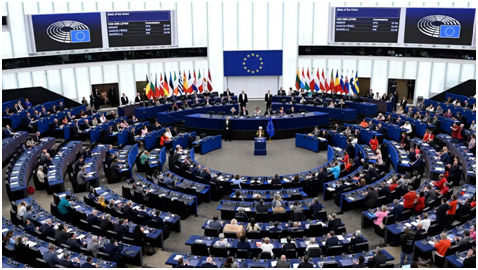A major shift in pace and adjustment to parts of this ambitious AI Act is being proposed by the European Commission, agency reports have announced. In layman’s terms: “A delay to full implementation of rules on ‘high-risk’ AI is now being planned by Brussels and integrated into a new legislative bundle called the Digital Omnibus,” because “the EU wants to give industries more time to adapt to new laws while preparing to remain internationally competitive,” Reuters reported recently.
It’s a significant change. The AI Act was hailed as “a cornerstone of European digital governance” by balancing safety, accountability, and human rights. However, faced with outrage from some civil society organizations and approval from most companies, regulators now say the delay will give them time to create adequate tools and avoid “CHAOS” among application enforcers. Opponents retort that this delay gives leverage to big players and undermines what the EU is supposed to accomplish for protection. (reuters)

The EU is pushing back key AI Act rules, drawing mixed reactions. (Image Source: LinkedIn)
The Fundamentals: What’s Late, And Why It’s So Significant
The crucial change involves postponing requirements for high-risk AI systems. The highest-risk categories include diagnostic medical use, biometric systems for identity verification, credit scoring for lending decisions, recruitment, law enforcement, and other high-risk tasks.
Implementation is now being pushed further off into the future-later in 2027-than was anticipated, according to Commission filings, to give companies more time to comply. As policymakers see this delay becoming effective, it will “ensure that technology standards and enforcement frameworks are developed” before severe penalties are imposed.
This is significant to individuals and markets, too. Citizens can benefit from tougher limits on surveillance, bias, and automated decision-making under the initial Act. Any business entity, especially small-scale enterprises, may have to pay highly for adhering to the initial timeline at a time when most of these organizations are attempting to grow. The Commission balances rights and growth to arrive at this delay rationale.
A Political And Economic Pressure Cooker
But why the need for change now? There are several pressures being exerted on Brussels to move in one and the same direction. Players from industries and several nations feel Europe is being handed over to America and Asia because too many regulations cause delays for new products to enter markets.
Large tech players have also lobbied aggressively because start-ups feel regulators’ demands are causing unending inconsistencies among these requirements: AI Act Regulation, GDPR Regulation, Data Act Regulation, and ePrivacy Regulation.
Nevertheless, civil rights organizations and privacy activists point out that this is no time to let their guard down because “the technology is advancing at breakneck speed,” and “if safeguards are removed at this stage, it will become exceedingly difficult to climb back onto the right track.” It is thus no longer merely an academic discussion but rather one concerning whether regulation should move at the speed of light or take a cautious approach to protect basic rights.
The Digital Omnibus: Streamlining Or Watering Down?
The Digital Omnibus is “the overall vehicle for this transition,” announced as a kind of ‘digital tidy-up’ to harmonize the EU’s digital rule book and “provide a one-stop shop for regulation to meet new demands” and enjoy “more use of sandboxes,” or testing environments, as discussed below.
While hailed for streamlining regulation and avoiding “billions of euros of additional costs” through reducing ‘administrative duplication’ or ‘red tape,’ its critics argue “it’s a backdoor dilution of any kind of transparency or supervision inside or around those areas where regulation is developed and implemented,” or regulated industries.
Two realities come to mind: first, one reality is that it is necessary to have a coherent body of law because so many laws overlap at this point. But then comes the reality of whether or not Europe continues to lead the world or lowers its barriers to attract investment.

The EU’s Digital Omnibus simplifies tech rules, but critics fear it may weaken oversight. (Image Source: Didomi)
What Startups And Investors Have To Say
Start-ups tend to hail this delay. Many scale-ups have told regulators within the EU that they have “crushing” compliance burdens at just the point at which they are seeking “product-market fit” and investment. This is certainly a compelling argument: if start-ups do not have to solve major problems like transposing new laws at once, maybe this will help them to raise funds and hire new workers inside Europe. One venture capitalist openly suggested that too quick a timeline may cause innovation to happen elsewhere.
Not all investors cheer, however. Some fear that relaxations of regulations indicate uncertainty on the part of regulators, which may dampen strategic investment in safety, ethics, and integrity down the road. The best option for investors is for regulators to take one approach: give companies time, but also give them a roadmap of how and when regulations will come into play.
Big Tech: The Obvious Winner?
Those most affected by this protracted schedule are large platforms and model developers. Large-scale actors have budgets for regulation and enjoy economies of scale to implement policies universally instead of region by region or country by country. Delays give these actors time before having to refactor architecture to comply with regulations and implement unified policies uniformly around the globe, rather than having region-specific policies. This is viewed as Big Tech’s use of its power to favour its own policies.
The Alarm Raised For Privacy And Civil Society
Digital rights groups criticize this legislative package because it undermines accountability: These groups point out that some of the measures contained within the Omnibus weaken limits on the use of personal data for model development and enlarge grace periods for compliance, thus potentially increasing invasions of privacy rights and diminishing rights for harm suffered.
What All This Means For Crypto And Decentralised Systems
But for the crypto expert and developer, rather it is the detail of Europe’s intention that is most intriguing to center stage. The easy timeline may very well facilitate teams to implement on-chain development infrastructure, oracles, and decentralized identity management software; they have more time to integrate mathematical verification, auditing, and governing requirements into new regulations. Anything smacking of softening requirements for auditing or openness is to trust itself, and trust is what the crypto industry leans on for its existence.
Web3 keeps trying to “fix” KYC by reinventing it.
idOS did something simpler: it aligned with how compliance already works.FATF Recommendation 17, EU AMLD5, and the upcoming EU AML Regulation all permit third-party reliance (passporting).
Banks use it. Fintechs use it.… pic.twitter.com/FSVHqQnfAB
— MaeveKnows (@maeveknows) November 19, 2025
A Corporate Playbook: What Companies Need To Do Now
- Data mapping: Identify where your AI Act, GDPR, Data Act, and other laws overlap. Don’t forget: A delay does not excuse fulfilment of these obligations.
- Invest in fundamentals: This is your opportunity to improve risk assessment processes, logging processes, human-in-the-loop processes, and documentation processes. The fundamentals benefit all rulers.
- Join sandboxes: Regulatory sandboxes have become a major approach to operate systems under supervision and demonstrating good faith.
- Engage policymakers: The months to come will include legislative activities, and thus meaningful comments will shape final regulations.
- It is most important to pursue transparency: even if obligations come late, market confidence is won by those organizations that publish risk analysis and documentation.
Market Signals And What To Watch For Next
Note carefully these developments: first of all, the exact timeline outlined in Commission communications, whether the European Parliament resists any aspects of its Digital Omnibus Package, positions of member-state governments within the Council of Ministers, or lawsuits or social campaigns emerge. Each of these will indicate whether it’s merely a momentary shift or a whole new restructuring of European technology policies.

Key EU decisions and reactions will show whether this delay is temporary or a deeper tech policy shift. (Image source: Medium)
Deep Dive: What Is To Follow And Why It Is So High-Stakes
The Digital Omnibus adopted by the Commission does not just move dates around. It resets the clock for politicians and geeks on how Europe should control powerful infrastructures that have become ever more pervasive in daily lives. MEPs now have another runway to further harmonize laws, to adopt enforcement regulations, and supportive measures to implement them properly. This is good to see as long as it is done cleanly. But now politicians have new choices too: go for speed on competitiveness or for maintenance of strong safeguards, which Europe committed to deliver to its citizens at all costs.
The three pressing tasks, in particular, that have been outlined by the Commission broadly revolve around several key themes. Firstly, secondary regulations to convert high-level requirements into testable requirements will be finalized. Then, better integration between already extant laws, such as the data protection framework and its new counterpart, is to be put into place to eradicate repetition.
Another one is to facilitate sandboxing regulation and code of practice to allow new systems to run as prototypes under supervision before entering the marketplace. Each one of these areas spells trouble if any of them go unattended because they create any number of loopholes or make compliance unfeasible at best.
Nation By Nation: Politics On The Ground
Not all EU capitals share the same reading of the omnibus.
“The heavyweight players of France and Germany are forcing the Commission to adopt a pragmatic attitude of pause.” Their explanation: “Protect the competitiveness of the single market and give companies legal certainty on implementation.” “A hurried approach to enforcement may lead to fragmentation of markets while their civil servants remain ill-equipped to monitor complex systems,” officials have argued, justifying the leeway being given to the Commission.
A variety of concerns have come from northern and smaller member states: Those countries which have a strong tradition of privacy protection are worried by what they see as creeping flexibility: they want very strict limits to the use of surveillance measures and any simplification of Data Protection to maintain individuals’ rights. Smaller economies located near fast-growing centers of high-tech industries want to have no uncertainty if they are to retain investment flight.
“MEPs are at the balancing point: they may accept, propose changes to, or defy each point of the omnibus text,” Alistair Burnett adds. “And if the Parliament resists the very same Commission efforts to reduce complexity and improve accessibility to vital spending information, the lawmakers may preserve or even fortify these points while seeking to impose clarity on others!”

EU nations are split; Parliament may still challenge the omnibus plan. (Image Source: Euronews.com)
Implications For Investments And Markets: Where Capital Flows
What investors detest is uncertainty and asymmetric enforcement. The Digital Omnibus BILL removes uncertainty for some players by extending transition periods. This is good because it will solve immediate problems: funding rounds can close without last-minute rewriting of compliance requirements, talent acquisition strategies can move forward unchanged, and product strategies remain unchanged.
But one thing is even more significant: the lag helps favor established players. Large companies have the runway to standardize their platforms to lock in customers. Smaller companies have a runway too, but also realize that while having looser regulation gives them leeway to operate, it may also create competition that favors scale rather than emphasizing strong governance in their products.
However, for crypto and decentralisation projects, this looks different. Venture capitalists with investments in blockchain infrastructure would benefit from having additional runway to integrate cryptographic audit capabilities, decentralised identity solutions, and governance solutions into products. But investors prioritizing things like safety and transparency would benefit from enforced regulatory terms for projects to demonstrate actual investment in safety measures.
Essentially, capital follows clarity. This omnibus provides a delay but no assurance for future investment if ambiguous regulations emerge for final approval. (reuters)
Case Studies: Reading Between The Lines
A European health-tech start-up company.
A midstage company developing diagnostic software would have to go through costly recertification under the initial schedule. The postponement provides leeway for such a company to carry out clinical trials and join a sandbox for regulation while utilizing learnings to improve safety for its products to gain market dominance, come what may. A company facing postponement and failing to engage meaningfully in preparation for regulation may have to rush towards the end and is thus faced with a reputational disaster.
A global platforms provider company.
A large cloud company helps in both ways: it makes use of the time to coordinate world policies and to influence standardizations according to its infrastructure setup. It can absorb transition costs and influence secondary standardizations because it has deeper pockets. This is why there is civil society apprehension regarding the changed playing field if left unchecked by the omnibus act.
A crypto oracle project.
On-chain data relays have to demonstrate integrity and lack of manipulation. This adds to the project time spent on providing provable cryptography, security audits, and transparent governance policies by project teams to demonstrate accountability to investors, who will reward responsible efforts directly.
However, having the omnibus water down requirements for project transparency and security audits implies that while the lack of actual project accountability provides an undue benefit to all projects acting similarly before regulation, they now take full advantage of this reality directly.
Practical Advice: A Playbook For Founders, Policymakers, And Advocates
For Founders And Product Teams
The delay should be treated as a resource rather than a respite. It is advisable to leverage this additional time to document model behavior, create transparent audit paths, engage in adversarial testing, and so on.
Publish governance artefacts.
Sharing risk assessment information, test histories, and being clear on your human review policy helps establish market trust and aids future auditability.
Play in sandbox environments: Regulators prefer regulated testing now. Be one of the early adopters to use customer feedback to shape your products.
Budget for “compliance as a feature” because we shouldn’t treat “governance as a tax” but rather as “compliance as a feature” because it “reduces legal tail risk.”
For Civil Society And Advocates
- Litigation readiness should come first: Since rights are being diminished, it is necessary to act together through lawsuits. Evidence should also be saved because lawsuits take time.
- Push for Transparency Obligations: Encouraging registries of ownership, reporting requirements for incidents involving children, and third-party audits maintains constant pressure on good practice.
- The Standards Do Work: The efforts put into shaping CEN-CENELEC and other standard development organizations have started to bear fruit, as these standards are now being taken as a basis for Technical Compliance.
Trust Equation: Trust Is Based On Competence Rather Than Speed
“And this is what the whole argument comes down to: trust. What corporations want is to have room to innovate and experiment. What people want is to have some sort of assurance and certainty. And if Europe can find a strong balance between concrete timetables and non-negotiables to which they commit strongly to enforcing,” writes David Kirkpatrick of The New York Times, “then
Loose regulation could result in reputation risk, though. This is because companies will have to operate amidst patchy regulation around the world and lack clarity on what is expected of them. This is bad for the crypto market because trust is key to flourishing, and nothing promotes trust better than reputational risk for one’s peers.

Trust relies on competence, and loose regulation risks reputational damage in crypto. (Image Source: Euronews.com)
Data, Documentation, And Disclosure: The Non-Negotiables
Irrespective of the text itself, regulators and markets will need three things:
- Auditability: “Logs and third-party verification to validate how a system arrived at particular outcomes.”
- Human Oversight: processes that clearly enable human intervention for high-stakes decisions.
- Incident Reporting: Obligatory reporting of incidents and near misses to regulators and occasionally to the general public.
Those projects developing these into roadmaps will adjust to all current regulations. Those that do not will have reputation and litigatory risks to consider once enforcement is invoked.
Conclusion: Uncertainty And The Opportunity For Something Better
Governance is necessarily iterative, as is demonstrated by the Digital Omnibus in Europe. The Commission itself understands this and knows its own enforcement capabilities and technical standardizations need to converge at the pace of technology itself. This makes sense. But again, the Digital Omnibus provides a political opening: It is now up to Europe to sort out its own competition and protection policies to keep its own principles or speed to protect its principles.
It is simple to state what all parties should do: “Builders, investors, and residents should all take a responsible approach: prepare now for new regulations, document all activities to demonstrate preparedness, and make readiness for new regulation a strategic advantage.” And if they all do this, their delay becomes “time to construct responsibly and gain trust to enter a new market where safety and performance coexist freely.”
Frequently Asked Questions
- Q: How long is the delay?
A: The Commission proposes moving some high-risk obligations to December 2027, thus extending the original deadline of August 2026 by around 16 months for many firms. This is subject to final text and approvals. - Q: Are corporations now permitted to utilize personal information for training models?
A: Not necessarily. The omnibus “proposes clarifications which may facilitate consent requirements in limited scenarios,” but any adjustment requires approval from Parliament and compatibility with “the bloc’s data protection framework guidelines.” Expect very specific boundaries to become contentious areas quickly. - Q: Will it end court cases?
A: Unlikely; rights activists may pursue a lawsuit should they feel that the omnibus act weakens safeguards. Judiciary intervention is expected to take major precedence in clarifying novel or revised rights obligations. - Q: What should crypto projects do instead?
A: Please detail the encryption assurances, regulation processes, or audit trails during this period. These features enhance resiliency, whether or not the omnibus narrows or widens regulations. - Q: What is it that’s been delayed?
A: The schedule for “high-risk” AI systems, such as those relating to health care, biometric ID systems, lending decisions, recruitment decisions, law enforcement, and others, shall now take place several months to several years later than before, within the Digital Omnibus Act. - Q: What is the reasoning behind this action by the EU?
A: The Commission points to the need to avoid piecemeal and hurried enforcement, to harmonize norms involving several laws at once, and to give companies, especially the SME sector, time to comply without stifling innovation. This does not necessarily translate into weaker rights for individuals, but the details around how the Omnibus affects new terms of obligation, consent for the use of data, and enforcement will tell. - Q: Is this good for Big Tech?
A: Big companies have received relief and latitude that may cut their near-term cost of compliance. For many, this makes the legislation more approachable. - Q: What should startups do instead?
A: Start making use of this additional time to implement best practices for each one’s own approach to being “compliant” while exploring opportunities to use “sandboxes” for regulation experimentation or testing.

